
Time-lapse that took 20 years to make shows legendary stellar explosion
Scientists have spent 20 years putting together time-lapse footage offering a stunning window into the past. Two decades of data taken from NASA’s Chandra X-ray Observatory were used by astronomers to create a video of a stellar eruption that actually occurred 180 years ago. Observations from Chandra, taken in 1999, 2003, 2009, 2014 and 2020 were all used, in combination with data from ESA’s XMM-Newton spacecraft. With the combined data, experts were able to capture the stellar explosion, known as Eta Carinae. Eta Carinae is a famous star system containing two large stars, one of which is around 90 times larger than the Sun, while the other is around 30 times as large. The “Great Eruption” from Eta Carinae is believed to be the result of the merging of two stars that were originally part of a three-star system. Eta Carinae Time-Lapse, Chandra X-ray Observatory www.youtube.com It first took place in the mid-19th century and the aftermath is still continuing to be observed today. New footage shows how the explosion has expanded into space with staggering speeds of up to 4.5 million miles per hour. In a statement, NASA officials explained: “During this event, Eta Carinae ejected between 10 and 45 times the mass of the sun. This material became a dense pair of spherical clouds of gas, now called the Homunculus Nebula, on opposite sides of the two stars.” The Homunculus Nebula is the blue cloud visible in the video, while the growing bright orange ring shows how X-ray emissions have grown and expanded over time. “The new movie of Chandra, plus a deep, summed image generated by adding the data together, reveal important hints about Eta Carinae’s volatile history,” the statement read. “This includes the rapid expansion of the ring, and a previously-unknown faint shell of X-rays outside it.” Sign up to our free Indy100 weekly newsletter Have your say in our news democracy. Click the upvote icon at the top of the page to help raise this article through the indy100 rankings.
2023-09-28 18:52
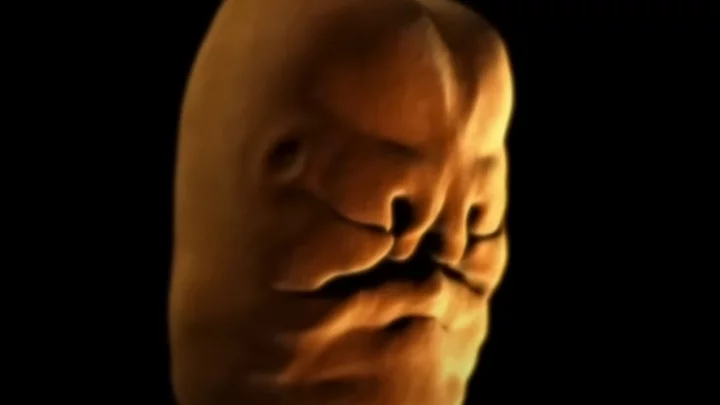
Video showing how babies' faces form is giving people nightmares
The human body is an extraordinary thing – and now, one video is proving just that, while simultaneously giving people nightmares. Childbirth is often regarded as one of nature's most incredible events, but have you ever questioned how a baby's face develops while in the womb? Neither have we. But thanks to the BBC, people are divided about how "beautiful" the process actually is. The simulation shows how the baby's face starts with the philtrum, the area between the bottom of your nose and upper lip. During the episode of Inside the Human Body: Creation, Michael Mosley points out: "Down the centuries, biologists have wondered why every face has this particular feature. What we now know is it is the place where the puzzle that is the human face finally all comes together." The footage then recreates a baby's facial development via an animation, which begins with two holes at the top of the head. It appears as though the features then start to merge, though this is the baby's nostrils. (Fast-forward 32 seconds in to the below video to watch:) Face Development in the Womb - Inside the Human Body: Creation - BBC One www.youtube.com "We've taken data from scans of a developing embryo so we're able to show you for the very first time how our faces don't just grow, but fit together like a puzzle," Mosley continues. "The three main sections of the puzzle meet in the middle of your top lip, creating the groove that is your philtrum." He continues: "This whole amazing process, the bits coming together to produce a recognisable human face, happens in the womb between two and three months. "If it doesn't happen then, it never will." The snippet understandably garnered a mixed response, with one viewer writing: "That was so creepy yet amazing..." Another joked: "Makes me feel better that Brad Pitt and Tom Cruise once looked like space aliens." And a third quipped: "Thank you for the enlightening information and the skin-curdling nightmares." Sign up for our free Indy100 weekly newsletter Have your say in our news democracy. Click the upvote icon at the top of the page to help raise this article through the indy100 rankings.
2023-09-28 18:21

People are just learning Google's original name – and thanking god that it was changed
A world without Google would almost be akin to a world without water or air. Indeed, the internet behemoth’s power is so great that it’s even become its own verb. And sure, there are other search engines, but when have you ever heard someone say: “Let me just Bing that”? Yet, it turns out the iconic tech company could have had a very different fate had it stuck to its original name. That’s right, Google hasn’t always been Google. And at its inception back in 1996, it had a somewhat more risqué title. It was called… BackRub. Yep, BackRub. According to Standford University computer scientist David Koller, who wrote about the brand’s genesis back in 2004, founders Larry Page and Sergey Brin came up with the search engine's first name as a nod to its analysis of the web’s “back links”. However, a year after BackRub was born, Page and his officemates – including fellow graduate students Sean Anderson, Tamara Munzner, and Lucas Pereira – discussed a number of possible alternatives to the massage-evoking moniker. According to Koller, the final, fateful brainstorming session occurred one day in September of that year. “Sean and Larry were in their office, using the whiteboard, trying to think up a good name - something that related to the indexing of an immense amount of data,” he recalled. “Sean verbally suggested the word ‘googolplex,’, and Larry responded verbally with the shortened form, ‘googol’ (both words refer to specific large numbers). “ Anderson then searched the Internet domain name registry database to see if the newly suggested name was still available to use. But, since “Sean is not an infallible speller”, “he made the mistake of searching for the name spelt as ‘google.com,’ which he found to be available,” Koller continued. “Larry liked the name, and within hours he took the step of registering the name ‘google.com’ for himself and Sergey.” And the rest, as they say, is history. Sill, 25 years on from that simple domain name registration that would go on to change the world, people have shared their bewilderment that “BackRub” could have become a household name. “I could die without knowing that this was Google's old name,” one X/Twitter user commented. “What were they smoking back in 90s??” asked another. Meanwhile, a third responded with what we’re all now thinking: “Tbh I need a backrub.” At least the tech titans can now give themselves a pat on the back for a job well done with “Google”. Sign up for our free Indy100 weekly newsletter Have your say in our news democracy. Click the upvote icon at the top of the page to help raise this article through the indy100 rankings.
2023-09-28 16:49
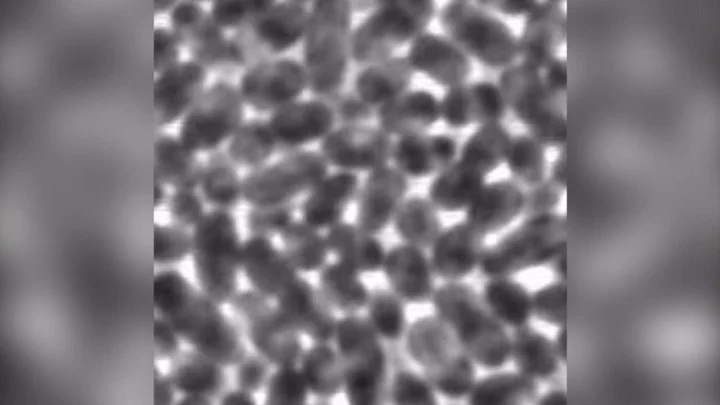
Sushi could secretly be spreading antibiotic resistance
Antibiotic-resistant bacteria are an increasing area of concern for health experts and scientists are concerned that the popular food sushi could be spreading it. Researchers at the Norwegian University of Science and Technology were interested in looking at the health implications of sushi, which is considered pretty standard fare in the country. Dr. Hyejeong Lee, who recently completed her PhD at the Department of Biotechnology and Food Science at NTNU, investigated different varieties of Aeromonas bacteria in seafood products that aren’t processed in a way that reduces bacteria, such as sashimi (raw fish) and cold-smoked fish. Lee explained: “The goal was to gain more knowledge about Aeromonas in this type of seafood – both the bacteria’s role in the deterioration of the product and in causing disease. Furthermore, we wanted to see if raw seafood can spread antibiotic-resistant bacteria.” While Listeria monocytogenes is the most well-known bacteria that can cause illness from unprocessed seafood, the prevalence of Aeromonas in similar products is an increasing worry for scientists for another reason. This is because Aeromonas bacteria frequently exchange genetic material with other bacteria in the sea, which means they can inherit and spread resistance to antibiotics before ending up in sushi. Lee explained: “Some strains of Aeromonas can also spread antibiotic resistance from one type of bacteria to another. Eating seafood infected by resistant bacteria is a likely way these bacteria can spread from marine animals and environments to humans.” Resistant bacteria are foreseen to be a big problem in the future, with the worst-case scenario being that few or no antibiotics will work at treating them. Experts believe it is important that antibiotic resistance is seen as a broad approach that is seriously considered in all aspects of society. Anita Nordeng Jakobsen, associate professor at NTNU’s Department of Biotechnology and Food Science, explained: “To combat the spread of antibiotic-resistant bacteria, it is important that we adopt a broad approach that looks at animal and human health, food production and the environment together in order to achieve better public health.” Still, Lee was quick to emphasise that the risk of getting sick from Aeromonas is very small, especially for healthy people. But, she stressed: “Aeromonas is often ignored when we talk about food safety. I think my research highlights that the food industry needs to pay more attention to these bacteria." Sign up to our free Indy100 weekly newsletter Have your say in our news democracy. Click the upvote icon at the top of the page to help raise this article through the indy100 rankings.
2023-09-28 16:22

'Creepy' Fungi have been contaminating international space stations
Astronauts have never truly been alone. In 1988, on board the Russian space station Mir, the crew noticed something had blanketed one of their windows – from the outside. Whatever it was had even begun to infiltrate its way into the station, slowly destroying the window's titanium-quartz surface. The blanket was eventually revealed to be fungi that had managed to hitch a ride into space by clinging onto the astronauts themselves, Space.com reports. Amazingly, the fungi had managed to adapt to the space environment, surviving and thriving on windows, control panels, and air conditioners. The on board the space station even had their food and water contaminated. Although this was the first instance of a hijacker damaging the space station, it wasn't the last. Many space-borne fungi remain dormant during launch, until "activating" and reproducing to form thick, living mats on various regions in the space station. The fungi can threaten the health of those on board as well as damage electronics and plumbing. Since the 1988 incident, there have been numerous attempts to establish robust cleaning routines for scrubbing the fungi off walls and equipment, in an attempt to prevent the organisms from causing serious issues. Despite the concern surrounding the risks, scientists are trying to take advantage of the fungi's abilities. One team associated with the European Space Agency (ESA) recently conducted hypergravity experiments on fungi to better understand how these organisms survive effortlessly in the harsh environment of space. If these mechanisms are understood, fungi may be able to be used to build off-world settlements and be incorporated into off-world medications. In 2016, researchers at NASA's Jet Propulsion Laboratory in California launched fungi into space for the first time on board the International Space Station. The team studied how the ISS environment caused the species to create certain molecules it doesn't produce on Earth. "We are never going to be able to get rid of fungi entirely as we venture into space, so we need to understand them," André Antunes, a researcher who is part of the recent ESA study, said in a statement published on Monday. In addition, they offer positive opportunities as well as risks. Down on Earth fungi are employed to make food - such as yeast for fermentation - as well as medicines, chemical enzymes for industry as well as metal nanoparticles used in numerous fields. Sign up to our free Indy100 weekly newsletter Have your say in our news democracy. Click the upvote icon at the top of the page to help raise this article through the indy100 rankings.
2023-09-27 23:55
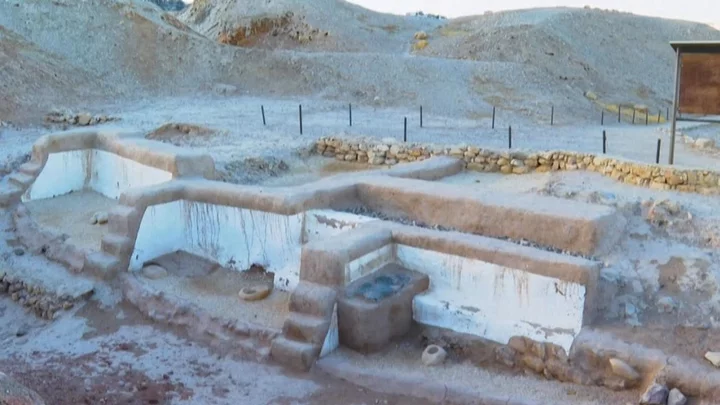
Archaeologists have discovered a new language in the ruins of an ancient empire
Ancient clay tablets unearthed from ancient ruins in Turkey by archaeologists have revealed a language lost to the passages of time. The new language was discovered in the ancient capital of the Hittite Empire at Hattusa (known as Boğazköy-Hattusha). The well-preserved tablets are among many incredible artworks found at the site - a UNESCO World Heritage Site. Over the past four decades, researchers have dusted off nearly 30,000 unique tablets - with most written in Hittite. New research, however, shows that some of the tablet haul shows that they are written in a language previously unknown to modern man. Of course, the meaning and words of this language have not been deciphered, but it appears from early inspection to branch off from languages used within the Hittite Empire - and is being referred to as Kalašma. archaeologist Interestingly though, researchers from the Istanbul Department of the German Archaeological Institute have noted that the new language is found within a recitation in a 'cultic ritual text'. While that's usually the basis of a middling horror movie, we're certain that there's nothing to worry about - it stems from an ancient Hittite practice. Professor Daniel Schwemer explains that the discovery wasn't unexpected. "The Hittites were uniquely interested in recording rituals in foreign languages," he said. These ritual texts provide insight into little-known languages, and thanks to this discovery, one more has been added to the list. Sign up for our free Indy100 weekly newsletter Have your say in our news democracy. Click the upvote icon at the top of the page to help raise this article through the indy100 rankings.
2023-09-27 20:28
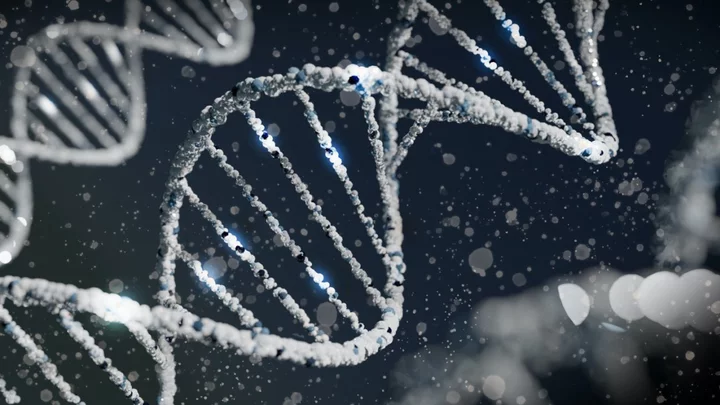
Scientists discover human groups that were long thought to be extinct are still alive
A recent finding in South Africa has rediscovered a human population that was thought to have been lost. When some languages from the Namibia Desert died out, anthropologists feared that the populations that spoke them had gone with it. However, researchers have discovered that the genetic identity of these once-thought lost populations may have been maintained, even without their native tongue. Southern Africa holds some of the greatest human genetic diversity on Earth, and it is a common pattern that this diversity suggests it is where a species or family originated. Even without fossil records, anthropologists would know humans evolved in Africa, simply by looking at how much greater the biological diversity is there. It is among the inhabitants of the Kalahari and Namibia Deserts of south-eastern Africa where this diversity can be seen most dramatically. "We were able to locate groups which were once thought to have disappeared more than 50 years ago," Dr Jorge Rocha of the University of Porto said in a statement. One of these groups is the Kwepe, who used to speak Kwadi. The disappearance of the language was thought to mark the end of their serration from neighbouring populations. Dr Ann-Maria Fehn of the Centro de Investigação em Biodiversidade e Recursos Genéticos said: "Kwadi was a click language that shared a common ancestor with the Khoe languages spoken by foragers and herders across Southern Africa." The team managed to find the descendants of those who spoke Kwadi, and discovered that they had retained their genetic distinctiveness that traces back to a time before Bantu-speaking farmers moved into the area. “A lot of our efforts were placed in understanding how much of this local variation and global eccentricity was caused by genetic drift – a random process that disproportionately affects small populations and by admixtures from vanished populations,” said Dr Sandra Oliverira of the University of Bern. "Previous studies revealed that foragers from the Kalahari desert descend from an ancestral population who was the first to split from all other extant humans,” added Professor Mark Stoneking of the Max Plank Institute for Evolutionary Anthropology. “Our results consistently place the newly identified ancestry within the same ancestral lineage but suggest that the Namib-related ancestry diverged from all other southern African ancestries, followed by a split of northern and southern Kalahari ancestries." The research allowed the team to reconstruct the migrations of the region's populations. With the Khoe-Kwadi speakers dispersed across the area around 2,000 years ago, possibly from what is now Tanzania. The populations that once spoke Kwadi, before adopting Bantu languages in recent decades, are the missing piece in the history of humanity as anthropologists identified in this study. The study can be read in Science Advances. Sign up to our free Indy100 weekly newsletter Have your say in our news democracy. Click the upvote icon at the top of the page to help raise this article through the indy100 rankings.
2023-09-27 19:18

New study suggests blue light from phones may drastically alter puberty
Blue light emitted from the screens of phones, tablets and televisions could induce puberty early, a study has found. In the modern day, children are raised with devices all around them, with many having a phone or tablet to keep them entertained from a young age. But, researchers in Turkey have discovered that it exposure to the blue light such devices give off could speed up the onset of puberty. Teams from the Gazi University and Bilkent City Hospital in Ankara revealed how they saw the effect in male rats, which could suggest a link between device screens and early childhood development. Their findings were presented at the 61st Annual European Society for Paediatric Endocrinology Meeting in The Hague and published in the Frontiers in Endocrinology journal. The study emulates the same findings that were observed in female rats, where early puberty was seen. Lead researcher Dr. Aylin Kılınç Uğurlu, of Bikent City Hospital, said: “For the first time, we found a direct relationship between blue light exposure and early puberty in male rats.” They continued: “Our findings align with our previous work on female rats, which also showed similar effects, thereby providing a more comprehensive view of how blue light may influence puberty in both male and female rats.” As part of the study, 18 male rats, all 21 days old, were split into three groups. Two of the groups were assigned either six or 12 hours of blue light exposure per day. The last group was a control and was not exposed to any blue light from screens. Results showed that the rats with exposure to blue light experienced signs of puberty “significantly earlier” compared with the control group. Uğurlu noted in a news report: “I want to emphasise that this is a rat study and direct results cannot be interpreted for humans. “However, we provide an experimental foundation to further investigate the health consequences of ever-increasing screen time in modern society.” Researchers hope to continue their study on the effects of blue light on rats to “understand its long-term effects on reproductive organ damage and fertility”. Uğurlu continued: “Ultimately, this research could lead to preventative measures and contribute to the ongoing discourse on how modern lifestyles affect physiological development and long-term health.” Sign up to our free Indy100 weekly newsletter Have your say in our news democracy. Click the upvote icon at the top of the page to help raise this article through the indy100 rankings.
2023-09-26 23:57
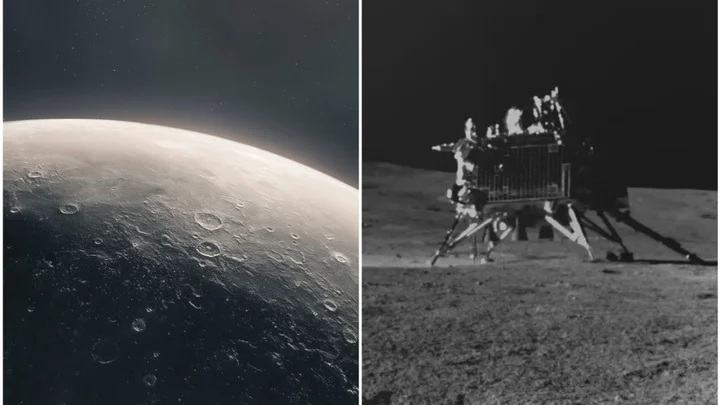
Moon rover makes 'unexpected' discovery on the lunar south pole
India’s Chandrayaan-3 lander only touched down on the Moon a month ago, but already it's made some major contributions to science. The spacecraft arrived on the satellite's unexplored south pole on 23 August, securing India's place as the first country to achieve this ambitious feat. Its rover, named Pragyan (or "wisdom" in Sanskrit) then embarked on an exploration of the rocky terrain, equipped with two instruments for conducting chemical experiments. And now, India's space agency, the ISRO, has published the ground-breaking data collected by the bold robot. Pragyan's findings offered a new, detailed insight into what makes up the lunar soil. And whilst scientists were unsurprised by the presence of iron, titanium, aluminium and calcium in the rocks, they were stunned to note a much higher concentration of sulphur than expected. The discovery is significant for a number of reasons. Most significantly, perhaps, because the sulphur could be used to help create a human base on the Moon. As Jeffrey Gillis-Davis, a planetary scientist, pointed out in a piece for Science Alert: "Astronauts and robots could travel from the south pole base to collect, process, store and use naturally occurring materials like sulfur on the Moon – a concept called in-situ resource utilization. "In-situ resource utilization means fewer trips back to Earth to get supplies and more time and energy spent exploring. Using sulfur as a resource, astronauts could build solar cells and batteries that use sulfur, mix up sulfur-based fertilizer and make sulfur-based concrete for construction." Gillis-Davis went on to explain that sulfur-based concrete has a number of advantages over the more common variety used in building, pointing out that it "hardens and becomes strong within hours rather than weeks, and it's more resistant to wear". "It also doesn't require water in the mixture, so astronauts could save their valuable water for drinking, crafting breathable oxygen and making rocket fuel," he added. The presence of sulphur near the Moon's south pole also suggests that highland soils at the lunar poles could have very different compositions to highland soils at the lunar equatorial regions. This would have key implications for our understanding of how the Moon works as a geological system, given that sulfur mainly comes from volcanic activity. Still, there's plenty of work to be done. And while this is all just one small step in Chandrayaan-3's mission, it could mean a great leap in how we view our dear celestial companion. Sign up for our free Indy100 weekly newsletter Have your say in our news democracy. Click the upvote icon at the top of the page to help raise this article through the indy100 rankings.
2023-09-26 23:48
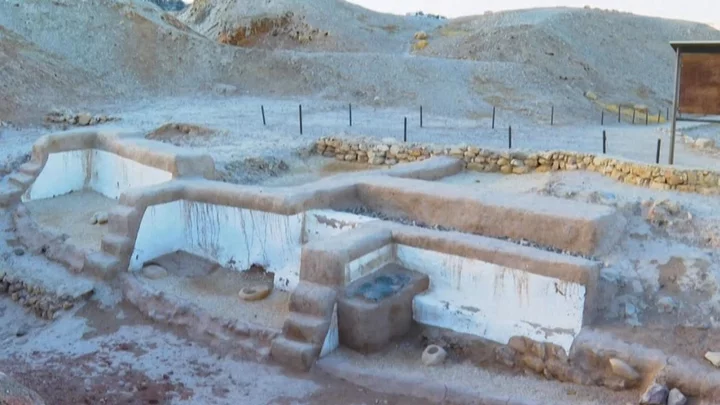
Archaeologists unearth never-before-seen language in ancient ruins
Ancient clay tablets unearthed from ancient ruins in Turkey by archaeologists have revealed a language lost to the passages of time. The new language was discovered in the ancient capital of the Hittite Empire at Hattusa (known as Boğazköy-Hattusha). The well-preserved tablets are among many incredible artworks found at the site - a UNESCO World Heritage Site. Over the past four decades, researchers have dusted off nearly 30,000 unique tablets - with most written in Hittite. New research, however, shows that some of the tablet haul shows that they are written in a language previously unknown to modern man. Of course, the meaning and words of this language have not been deciphered, but it appears from early inspection to branch off from languages used within the Hittite Empire - and is being referred to as Kalašma. archaeologist Interestingly though, researchers from the Istanbul Department of the German Archaeological Institute have noted that the new language is found within a recitation in a 'cultic ritual text'. While that's usually the basis of a middling horror movie, we're certain that there's nothing to worry about - it stems from an ancient Hittite practice. Professor Daniel Schwemer explains that the discovery wasn't unexpected. "The Hittites were uniquely interested in recording rituals in foreign languages," he said. These ritual texts provide insight into little-known languages, and thanks to this discovery, one more has been added to the list. Sign up for our free Indy100 weekly newsletter Have your say in our news democracy. Click the upvote icon at the top of the page to help raise this article through the indy100 rankings.
2023-09-26 23:28
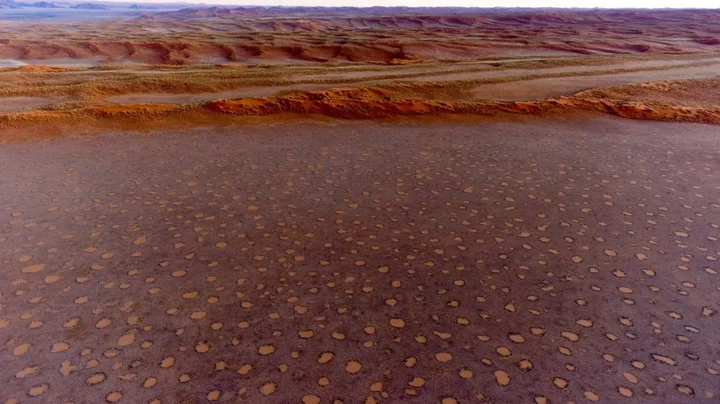
Mysterious 'fairy circles' are spreading across the world and scientists don't know why
A natural phenomenon consisting of polka-dot-style formations has been cropping up around the world, and scientists are baffled as to why. The circular-shaped patches of ground have been seen in deserts in Australia and Namibia but now experts believe they are more widespread than originally thought. Known as “fairy circles”, there are now 263 known sites across the globe where they can be found, according to new research published in the journal Proceedings of the National Academy of Sciences (PNAS). They have been documented in 15 countries, across three continents, including the Sahel region of Africa, Madagascar, and in Middle-West Asia. And yet, despite the spread of these anomalies, scientists are still none the wiser about how they actually form. A team led by environmental scientist Emilio Guirado, of the University of Alicante in Spain, explained in their paper on the "intriguing" phenomenon: “We conducted a global and systematic assessment of fairy circle-like vegetation patterns and discovered hundreds of [fairy-circle]-like locations on three continents. “Our study provides insights into the ecology and biogeography of these fascinating vegetation patterns and the first atlas of their global distribution.” The mysterious circles appear in desert regions and can be as wide as 12 metres (39 feet) in diameter. They are almost always spaced out and rarely connect or overlap with one another. Several theories have been put forward as to what causes them, including, tiny insects, termites, and plant toxins. But, none have been accompanied by any significant evidence and some have been debunked completely. One significant factor limiting their study is they are often found in places that are difficult to access and are inhospitable. Locating the 263 different sites of “fairy circles” involved analysing high-resolution satellite imagery. Guirado and his team wrote in their paper: “[The sites] include those already identified in Namibia and Western Australia, as well as areas never described before, including the Sahel, Western Sahara, Horn of Africa, Madagascar, Southwest Asia, or Central and Southwest Australia. “By doing so, our study provides a global atlas of areas showing FC-like vegetation patterns and expands the known existence of this vegetation type to new countries and continents.” The team hopes that locating new sites will enable them to find common traits that may point towards their cause. Sign up to our free Indy100 weekly newsletter Have your say in our news democracy. Click the upvote icon at the top of the page to help raise this article through the indy100 rankings.
2023-09-26 20:18

British Land says Meta surrenders lease at one London building
British Land said on Tuesday Meta had surrendered one of the two buildings it had leased at London's
2023-09-26 14:21
